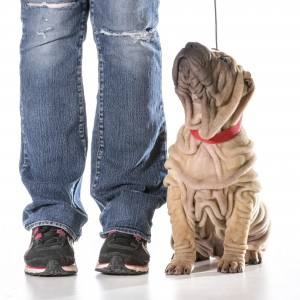Nose to Tail: How to Perform a Pet Skin Check
 A pet’s skin is his or her largest organ, so monitoring and maintaining good skin health is an important part of having a happy, healthy pet. Allergies, irritations, infections, parasites, lumps and bumps can all affect pet skin. Take the time to learn how to perform a thorough pet skin check to be sure you are keeping your four-legged friend in tip-top shape.
A pet’s skin is his or her largest organ, so monitoring and maintaining good skin health is an important part of having a happy, healthy pet. Allergies, irritations, infections, parasites, lumps and bumps can all affect pet skin. Take the time to learn how to perform a thorough pet skin check to be sure you are keeping your four-legged friend in tip-top shape.
How to Perform a Pet Skin Check
It is probably best to sit down once a month and really look at your pet closely. You may wish to keep a small notebook to document findings. Get comfortable in a well-lit area of your home. It is probably easiest to put small dogs or cats up on a counter so that you can really see what you are doing, but your lap will work too. Start at the nose and work your way back to the tail. Be sure to look at the following:
- Between folds of skin especially around the face and lips
- Inside the ears
- Between the toes
- In the armpits and behind the ears
- Under the belly and back legs
- Under the tail
- At the skin under the hair
- At the junction of haired and not haired skin (lips, bridge of nose, paw pads, anus)
Make sure to note any lumps, bumps, or skin thickenings as well as any scaling, oozing, or scabs. You might wish to count and measure lumps, particularly if your pet has several.
What You Might Find
You pet’s skin can be home to all sorts of problems. When you do your pet’s skin check, it is important to make note of:
Hair mats – Mats can be very uncomfortable and even lead to underlying skin irritation and infection. Common places for pets to accumulate mats are behind the ears, under the arms, and under the tail. If you are finding mats on your pet you may need to adopt a more regular grooming routine. You’ll also want to remove the mat as soon as possible.
Parasites – Ticks, fleas, and even lice can reside on our pet’s body causing irritation and spreading disease. Be sure that you are using good parasite control and look closely when performing your pet skin check.
Lumps and bumps – Raised areas on the skin can be a sign of everything from a skin infection to an allergic reaction, and even to cancer. Be sure to note exactly where the problem is so that you can have your veterinarian investigate further.
Scales or scabs – Scaling, scabbing, or oozing can be a sign of inflammation or infection. If you find these things, have your veterinarian take a look to see what is going on.
Redness or swelling – These are also signs that something is not right with the skin and should be looked at in a timely manner, particularly if in the ears or under the tail.
Odor – A bad odor is often a sign of a bacterial or yeast overgrowth and likely needs treatment.
Hair loss – Make note of any areas of missing or thinning hair and be sure to bring those to your veterinarian’s attention.
By performing a routine pet skin check, you allow yourself to become more familiar with your pet’s body and learn to identify problems sooner. This allows your veterinarian to treat any issues in a more timely fashion, lessening any discomfort your pet may have. Diagnosis of more serious problems like autoimmune disease or cancer may result in a referral to a veterinary specialist like the board-certified team at Oakland Veterinary Referral Services. Your regular skin checks, combined with early diagnosis and treatment, gives your pet the best outcome potential.
Consider making a pet skin check part of your pet care routine. Paying attention to this important organ is essential to helping your pet stay happy and healthy.


